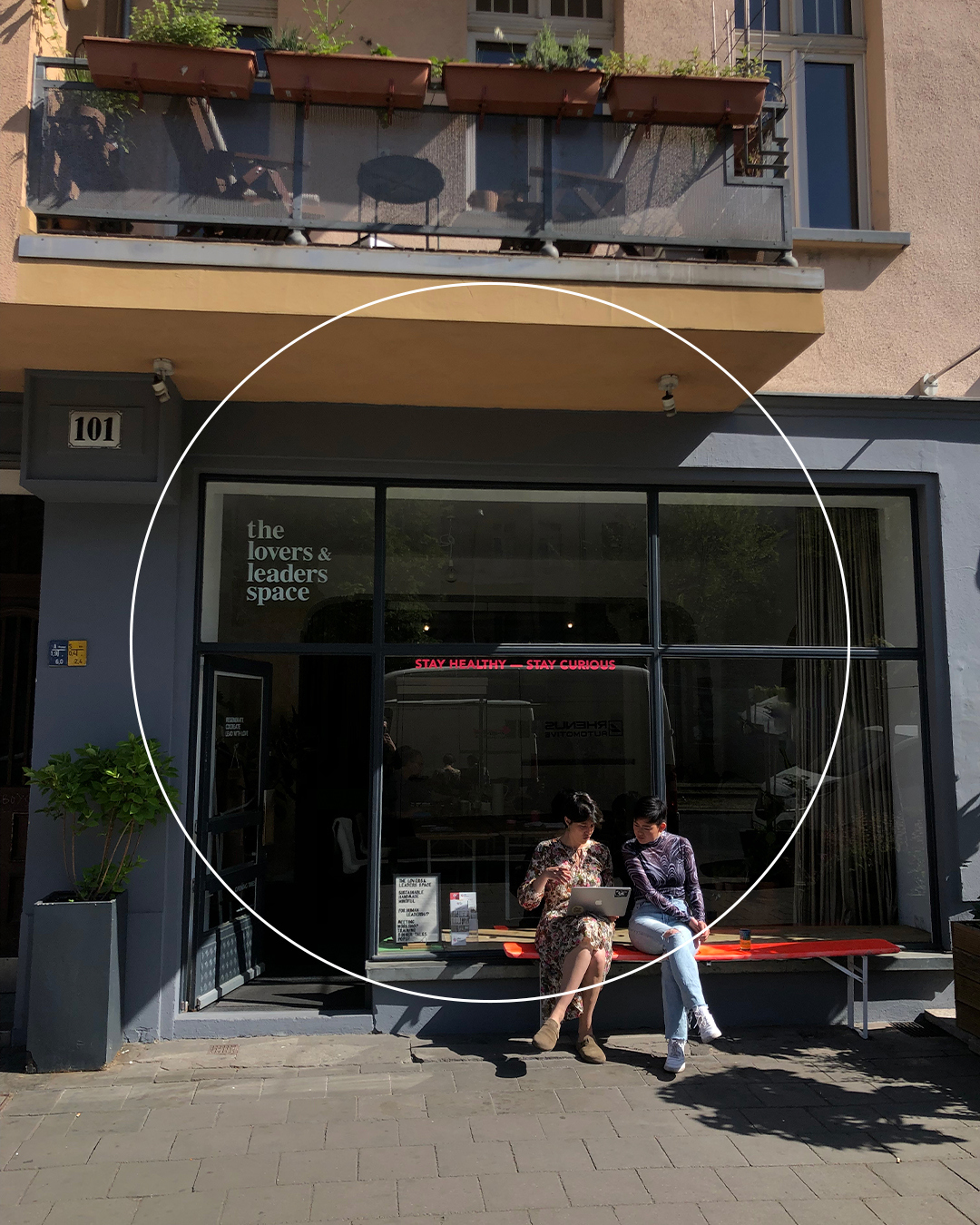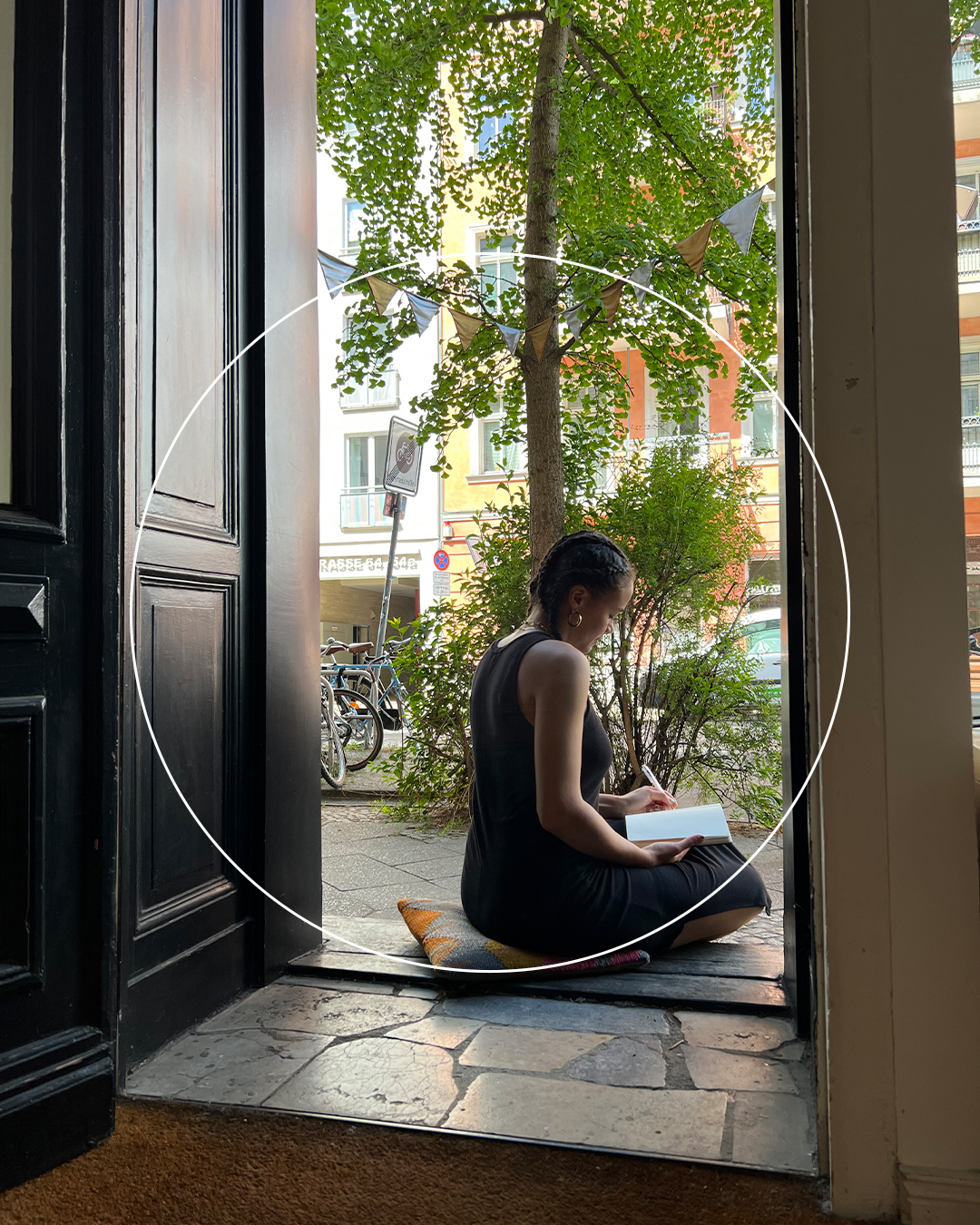Our Office Is an Open-Air Festival

“Show me your office space and I’ll tell you who you are.”
Raise your hand if you’ve ever said that.
Didn’t think so.
We want to see our work as a continuation of our true selves. It’s a chance at fulfillment, not a definition based in the furnished casings that surround us. And we’ve come a long way from dreary cubicles and neon-lit corridors to places that act more like reflections of our goals and ideas. Offices are now diverse, functional, and more imaginative. And in the last two years we united with our homes in ways we never thought we would, but we also felt the pull of nature, and we realized our workspaces need to be more aligned with our deeper selves and the world(s) around us.
Monks and Frank Lloyd Wright
Remember the “punch clock”? A time-stamped artifact of our arrival and departure gave us concrete proof that both we and our work actually existed. We’d clock in and then disappear into some far-off cubicle until our biology gave us a reason to get up. Blame the monks for that. The monastic brotherhood used to labor away in medieval cubicles or “scriptoriums” as they called them, for extended hours. Maybe that’s why they made so much beer. For the modern worker it’s been nothing but bad coffee and beige polyester walls that are so deceptively similar that we’re disoriented into thinking that it’s safest to stay put.
Beautiful? Not at all. The same could be said when Robert Propst developed a so-called Action office, slightly reinventing the experience to allow for more flexibility and movement. That’s when the masterminds behind office planning bent their ear toward workers who wanted to shift from the labyrinthian experience of the cubicle craze to a more open and sociable space. Even the coveted corner office started getting glass walls. But that too felt unnatural: employees displayed at their workspaces like guppies in corporate aquariums, preserved in their bubble by a screen of questionable privacy. And yet, we fixed that too. Soon enough the walls were gone and a new concept was born: the Bürolandschaft—or “the office landscape”—vast planes freed from partitions.
Even Frank Lloyd Wright got in on the action. He designed an early open space for the Great Workroom of the Johnson Wax headquarters with a nod toward nature, aiming to stay closer to it by replicating its forms. (You can be sure this image is featured somewhere on Wes Anderson’s mood board.) Take a look at the white dendriform columns that rise to circular “lily pad” tops at the ceiling, and the beautiful Cherokee red furniture designed by Steelcase. In their five-episode podcast on the evolution of open offices, hosts from Steelcase cite management grandpapa Peter Drucker as the inventor of the term “knowledge worker.” Because it was the late 1950s, and we were moving from efficiency to effectiveness—breaking away from the concept of work as a way to merely provide for the family and survive. Instead, we were beginning to see it as a chance to establish one’s worth and express the value of a worker’s ideas. With it, the workplace had to be rethought to properly suit the needs of personal fulfillment. So…

Hopscotch, candy canes, and a WiFi wonderland
Gone are the temporary walls to cordon workers from themselves. Gone is the corner office caste system. Let’s be equals, let’s be fully collaborative! As companies strive to attract more talent, offices need to seem attractive and entertaining. Noise is permitted and applause is encouraged as rows upon rows of headphoned knowledge workers peck away at clunky Dell keyboards. People now move freely and often, desk to desk, never to feel siloed again. The advent of computers—and later laptops—is also crucial to this sense of mobility.
And this soon gives birth to the “fun office,” force-fed to the world by boom-boom startup culture. The workplace suddenly borrows from the basement of a spoiled teenager: there’s a living room, beanbags, and a fully equipped kitchen where staff mingle over Pop Tarts and aloe vera juice. Meeting rooms are named “solutionary space” and “cranium closet” and there are cotton candy machines and a daycare for dogs. So when do people work? Good question. The office is set up to blur the line between work and leisure time, so workers are working, well, all the time. This attempt to broaden the workplace experience is noteworthy, but what exactly is the ultimate goal??
Roof be gone
The past two years have shown us the futility of creating a whole entertainment universe to bring meaning to the process of work when we can’t even assemble under the same roof. (Most of us probably don’t even want a roof anymore anyway). And once the pandemic allowed people to slowly open their doors again, many office workers refused to go back to the cable-laced prairies of open workspaces. Perhaps this is a sign that something has to be changed fundamentally about how we gather to work, and we shouldn’t be afraid to embrace this possibility to completely rethink our approach.
Look at these numbers from Pew Research Center: 61% of workers with jobs that can be done from home say they'd like to continue working from home all or most of the time when the pandemic is over if given the choice. As a result, the hybrid office, already existent before the pandemic, becomes especially promoted, allowing employees to move between a home work space and an office work space. “The latter will become primarily a culture space,” Harvard Business Review predicts, “providing workers with a social anchor, facilitating connections, enabling learning, and fostering unscripted, innovative collaboration.”

Let’s be honest. At some point during the lockdown, we all stepped outside, felt the sun on our Zoom-stained faces, and thought: “This is where I’m meant to be—watching the sakura tree shower pink leaves, following the dandelion seed floating in the wind… wait is that a hummingbird? Did anyone else see that?” After spending all that time in nature during confinement, it seems ridiculous to be back inside a manufactured work environment while missing out on the human right to breathe fresh, open air.
But thankfully, with constraints comes creativity: the global trend is now to launch initiatives like replacing rooftop parking spaces with gardens for employees to plant vegetables, and adding nature-friendly furniture, like hammocks, for people to use between meetings. “Fueling this trend is a growing awareness of the health and wellness benefits from contact with nature, a concept known as biophilia,” writes Jane Margolies of The New York Times. “Exposure to nature has been shown to lower levels of cortisol, the human stress hormone, as well as stimulate creativity.” In fact, if a company wants to hire or keep a worker today, plastic slides and popcorn machines are no longer the way to go—instead, companies should be opening more terraces for yoga and golf, incorporate glare-proof screens in their outdoor conference rooms, and invest in landscape architecture. Outdoor conference rooms. Now we’re becoming human again.
Even indoor office spaces are starting to replicate the outdoors: Verda Alexander who designs Silicon Valley offices has created spaces for Slack’s San Francisco headquarters in a way that gives a feeling of a wilderness trail “where you don’t know where it leads or ends.” Long gone are the days of finding your way through the linoleum office maze: now if people want to get to the printer, they’ll need to forge a path through a forest simulation. Other office designers are beginning to incorporate natural materials into office spaces too, like wood or other objects, to mimic more natural curves and colors (a throwback to Frank Lloyd Wright). And yet, an office with tables made of tree stumps and imported plants from the Indonesian rainforest is still very much an office. You’re still in an “office-like” setting. You’re still sheltered. You’re still, quite often, in no direct contact with the sun. Are we being radical enough?
According to a survey by L.L.Bean, 86% of indoor workers would like to spend more time outdoors during the workday. So, together with the co-working company Industrious, they launched a pop-up outdoor office in New York’s Madison Square Park in 2021, later bringing the campaign to Boston, Philadelphia, and Wisconsin.
Sure, pop up projects are nice, but what would be so wrong with torching the office altogether? Let us meet in treehouses, do deep work by the sea, sit around a fire again—a real one, not the high-res LCD screen one—for a heart-to-heart with the people we often spend more time with than our families. What’s stopping us? Who’s ready to revolutionize the way we think about work, teams, meet-ups, and productivity?
We can’t keep putting up walls between our work and the innate needs of our species. The air, the trees, the scents of the seasons, these are the elements that make us feel alive. These are the things that keep us alert and well. The business that figures out this concept will hold the key to unlocking the ultimate office experience—one basked in what it really means to be human, heartful, and free from the burden of being tied to a desk and a room. People living and working the way they were intended to. What could be more beautiful than that?
